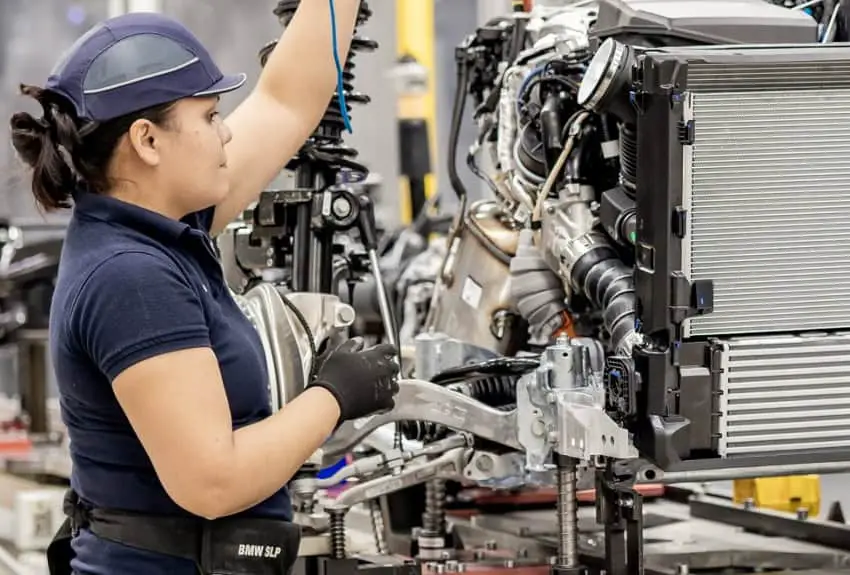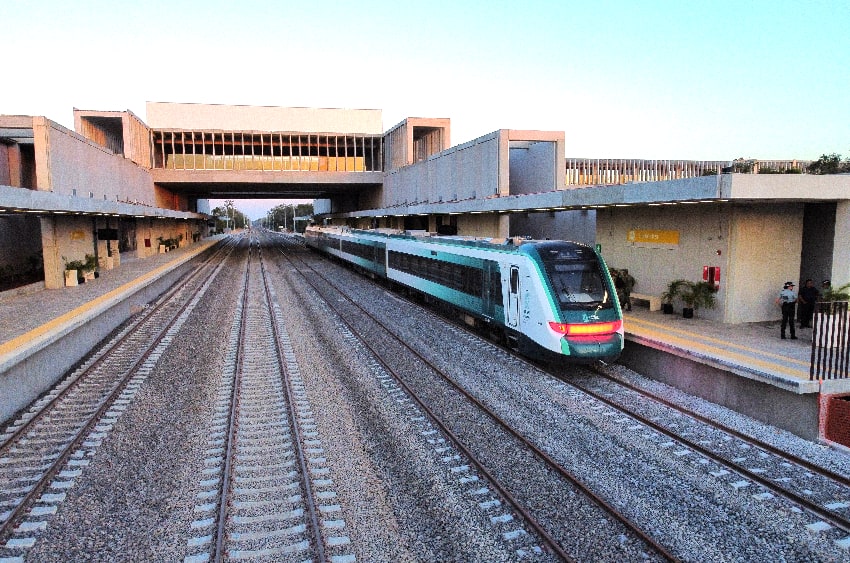Quintana Roo, Oaxaca and San Luis Potosí recorded the strongest economic growth among Mexico’s 32 federal entities, or states, in 2023, according to data published by the national statistics agency INEGI.
Fourteen states recorded economic growth above the 3.2% annual figure for the Mexican economy as a whole last year, while growth was below that level in 18.

The economies of three states — Tamaulipas, Zacatecas and Nayarit — contracted in 2023.
Quintana Roo, the Caribbean coast state home to tourism destinations such as Cancún, Playa del Carmen and Tulum, was the only state in the country to record double-digit annual growth last year. Its economy grew 10.2% last year, according to INEGI data.
Oaxaca ranked second with annual growth of 8.3% in 2023, while San Luis Potosí ranked third with an economic expansion of 7.9%.
Rounding out the top five fastest-growing state economies in 2023 were Aguascalientes and Campeche, both of which recorded 5.2% growth.
What are the strongest state economies in Mexico?
The other states that recorded growth above the 3.2% national figure were:
- Tabasco, 5.1%
- Sonora, 4.9%
- Yucatán, 4.8%
- Colima, 4.4%
- Hidalgo, 4%
- Durango, 3.9%
- Mexico City, 3.8%
- Querétaro, 3.5
- Michoacán, 3.5%
Puebla and México state recorded 3.1% economic growth last year, while the economy of Nuevo León — a significant beneficiary of nearshoring investment — expanded 3%.

Six Mexican states — Baja California, Chihuahua, Veracruz, Morelos, Baja California Sur and Jalisco — registered growth of 2%-2.9%, while the economies of five states — Tlaxcala, Guerrero, Chiapas, Guanajuato and Coahuila — grew at a rate between 1% and 1.9%.
GDP in Sinaloa increased by a modest 0.6% in 2023.
Among the three states where GDP declined last year, Tamaulipas recorded the sharpest contraction, with the economy of the northeastern state shrinking by 1%.
The economy in Zacatecas declined 0.9%, while GDP in Nayarit fell by 0.1%.
What factors helped Mexico’s fastest-growing economies in 2023?
Hugo Félix Clímaco, president of the Oaxaca College of Economists, spoke to the newspaper El Economista about the factors that helped Quintana Roo, Oaxaca and San Luis Potosí record strong economic growth in 2023.
Tourism, public investment and the broad coverage of government social programs all benefited the economy of Oaxaca last year, he said.
The federal government has invested significant amounts of money in infrastructure projects in Oaxaca, including the Interoceanic Corridor of the Isthmus of Tehuantepec — whose modernized railroad began operations late last year — and the new highway between Oaxaca city and the state’s Pacific coast.
Clímaco said that the 8.3% growth recorded in Oaxaca last year was also a product of its “very small [economic] base.”
“… So when a large public investment is made, like that on highways, the interoceanic corridor and the upgrade of the coking plant at the Salina Cruz refinery, it has a very big impact,” he said.
While Oaxaca recorded strong economic growth last year, Clímaco noted that there are many economic challenges in the southern state including high levels of poverty and the highest rate of informal workers in the country.

He also noted that the Oaxaca economy added far fewer jobs in 2023 than that of Quintana Roo, even though the former state has a much bigger population than the latter one.
Just over 9,000 additional jobs were created in Oaxaca last year whereas the figure for Quintana Roo was over 37,000.
The economy of Quintana Roo is heavily dependent on tourism, and thus the double-digit growth the state recorded last year can be attributed in large part to the strong performance of that sector, although it also received significant government resources via spending on projects such as the Maya Train railroad and the Tulum airport, which opened in December.
The number of visitors to Quintana Roo increased 8% to 21 million last year, while the state’s tourism revenue jumped 12% to US $21 billion.
“The challenges for Quintana Roo,” Clímaco said, “are ones of equity, greater inclusion and sustainability.”
“… While it is a tourism paradise, its greatest challenge is preserving this paradise. The environmental impact of the Maya Train can’t be denied, nor can the impact of establishing hotels in the Riviera Maya, sometimes with the destruction of mangroves,” he said.
With regard to San Luis Potosí, Mexico’s third fastest-growing state economy last year, Clímaco said that the state is benefiting from nearshoring investment and manufacturing activity. Located in the industrial-focused Bajío region, San Luis Potosí received over US $1.1 billion in foreign direct investment (FDI) last year, making the state Mexico’s ninth largest recipient of FDI.
German automotive manufacturer BMW was among the foreign companies that announced new investments in the state last year.
Clímaco said that manufacturing contributes to 37% of GDP in San Luis Potosí, and noted that the state also has a large agricultural sector.
“One of every five residents … works in the agricultural sector,” he said.
With reports from El Economista
